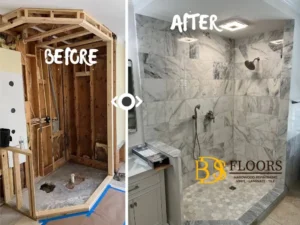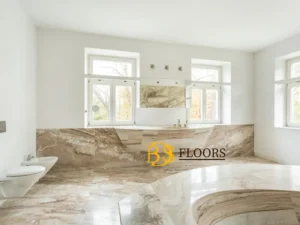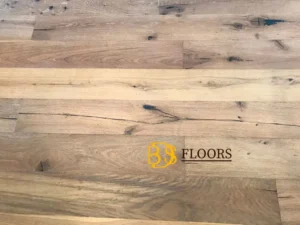This blog post will provide you with a comprehensive guide, a well-known chain of flooring stores with more than 1,000 locations across the country. They offer a wide variety of flooring options, such as carpet, hardwood, luxury vinyl plank, and tile. Although all stores share the same name and branding, prices and consumer experiences may differ. We will explore the history, the flooring brands they carry, and essential information you need to know before making a purchase there.
Flooring Brands
If you’re considering purchasing new flooring for your home, our flooring guide is here to help. Whether you’re just starting to think about it, ready to choose your flooring and start the installation process, or simply need help with maintenance, we have you covered.
Our guide provides you with our experience and expertise, guiding you through the process of planning, choosing, and maintaining your flooring. From setting a budget to shopping and installation, we cover everything you need to know. However, you don’t have to do it alone.
What are the most popular carpet flooring brands?
Carpet flooring stores offer several private label brands such as Bigelow, Lees, Tigressa, Oath by Resista, Innovia, Resista Softstyle, Invincible LVT, Invincible H2O, Rustic River Hardwood, Hydrotek, Bel Terra, and Mirror Lake. However, their most popular brands include:
Lees Carpets: A high-end brand offering various carpeting options that cater to different lifestyles, from soft and luxurious to durable and stain-resistant. Lees carpets are known for their construction and stylish design, although they come with a higher price point compared to other brands.
Hydrotek Waterproof Hardwood: A line of waterproof hardwood flooring designed for active households and commercial spaces. Hydrotek floors are engineered to be durable, water-resistant, and easy to clean while maintaining a natural hardwood look with a variety of designs to suit modern aesthetics.

After considering the in-store experience, variety of products, and knowledgeable sales reps, we seems like an attractive option for flooring needs. Additionally, with over 1,000 locations, finding a store near you is highly likely.
Carpet remains a popular flooring choice for homeowners due to its softness, noise reduction, and temperature maintenance properties. If you have selected the perfect carpet, the next step is to have it fitted. At Virtuoso Flooring, we always advise seeking the services of a skilled professional for the best results. However, if you choose to fit the carpet yourself, we want to equip you with all the necessary information and facts to ensure a safe and successful installation.
This guide covers everything from measuring for your new carpet to fitting and proper maintenance. If you have any questions or require further assistance, our expert team is always available to address any concerns.
Measurement
Accurate measurements are essential when purchasing and fitting carpet, as they are required to place your order and adjust the carpet during fitting. Since most rooms are not perfect squares, it is essential to consider obstacles like chimney breasts, fireplaces, and recesses when taking measurements. You can create a sketch of your room from a bird’s eye view to help you determine each measurement. Begin measuring each straight section of your room, taking note of your findings as you go. To account for waste, add an extra 5% to your measurements, and double-check your figures by measuring twice.
Stairs
To measure carpet for stairs, follow the same process as for a room, but take the height and depth of each step to calculate the accurate length needed. Keep in mind that even if your stairs look uniform, each step is likely unique, so measure each one individually for the perfect fit. It’s recommended to add 10% extra for waste when measuring stairs to account for any errors.
Fitting Tools
To fit your carpet, you will require several tools, most of which are probably already in your home toolbox. However, it is essential to ensure that these tools are in good condition and have no broken parts. In case you lack some of them, you can easily purchase them from your local hardware store. The necessary tools for proper carpet installation include a pencil for marking, a tape measure, knee pads for safety, a hammer, a carpet tucker, a sharp Stanley knife, a pipe, and cable detector for safety, hard-wearing and protective gloves, a hacksaw, a carpet stretcher, and a vacuum cleaner to reduce waste.

Old Floor Removal
Removing the old flooring is a satisfying part of the job that allows you to envision the new style of the room. It’s important to follow safe and appropriate methods that are suitable for the type of flooring you’re removing.
To remove old carpet, start in the corner and detach it from the tack strip holding it down. Use pliers if necessary for better grip.
To remove laminate flooring, try prying up individual planks. If this is difficult, consider melting the glue with a heat gun or using a motorized floor stripper.
For vinyl flooring, heat the surface with a heat gun to soften the glue and then pry it up carefully.
It’s crucial to follow the correct procedures and minimize risks during any flooring removal.
Preparation
After removing the old floor, it is important to prepare the surface before installing the new carpet. This involves addressing any unevenness or damage, such as by laying new tongue-and-groove boards, using smoothing compounds or floor screeds. All nails and tacks must be removed and a Pipe and Cable Detector should be used to locate any wiring across the floor.
Choosing the right underlay is crucial for the longevity and comfort of your carpet. Underlay provides slip resistance, absorbs shock, and helps to protect your carpet against wear and tear. It can also offer insulation against sound, heat, and moisture. There are many types of underlay available, such as PU foam, crumb rubber, sponge rubber, felt, and laminate underlay. It is important to select the right one for your room, and a professional carpet fitter can offer guidance in making this decision.
Fitting The Carpet
It’s time to start fitting your carpet, but before you begin, ensure that you have all the necessary tools on hand and consider having an extra pair of hands to help. Fitting a carpet is a skill that takes years to master, but with attention to detail and time, it can be done properly.
Measuring up is the first step. Trim the carpet to the required size, taking into account the allowances you made for waste. Once the carpet is laid out in the room, nudge it gently into each corner, and trim it to size once you are satisfied with the fit, leaving some excess.
To create crisp and well-fitting corners, make sure the carpet is tightly in place. Cut the carpet vertically to the point and fold the flaps into place. Always start fitting the carpet on the longest wall, working your way across one corner at a time, being precise with everything you do.
Use a sharp Stanley knife to make the straightest cut possible. A carpet stretcher can be used to push the carpet into place, making it flatter and easier to handle. A carpet tucker is also a useful tool to have on hand to fit the carpet under skirting boards.
Remember that carpets will shed during the first 48 hours after being laid, so vacuum up the fibres to make the carpet look new for longer. Congratulations! You have successfully fitted your own carpet.
Conclusion
However, it is worth considering Bds Floor. Local stores often offer better prices and personalized service. Additionally, supporting a local business helps to support the community.







